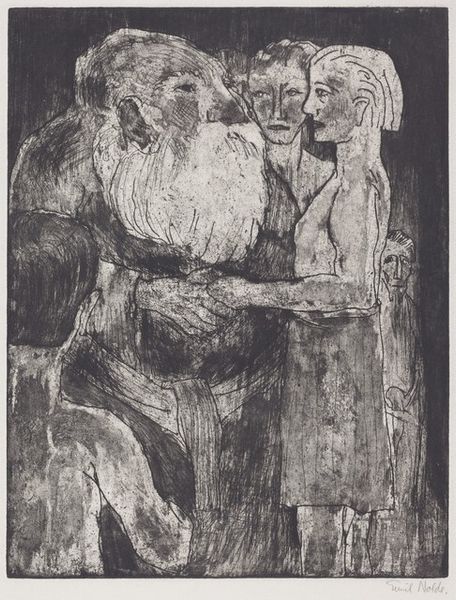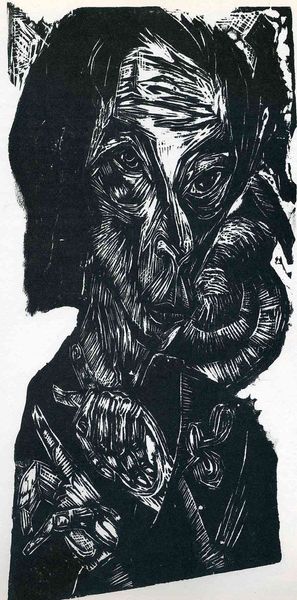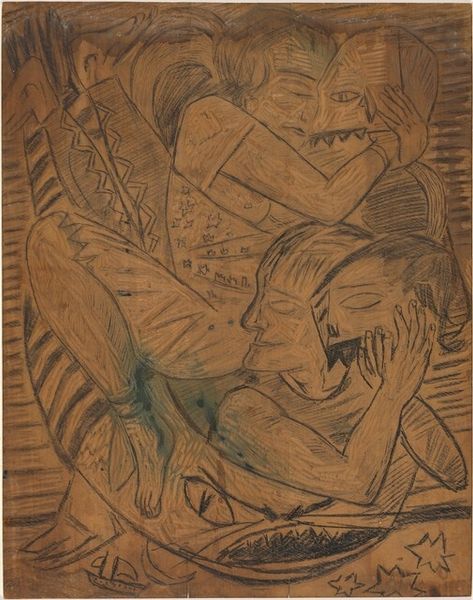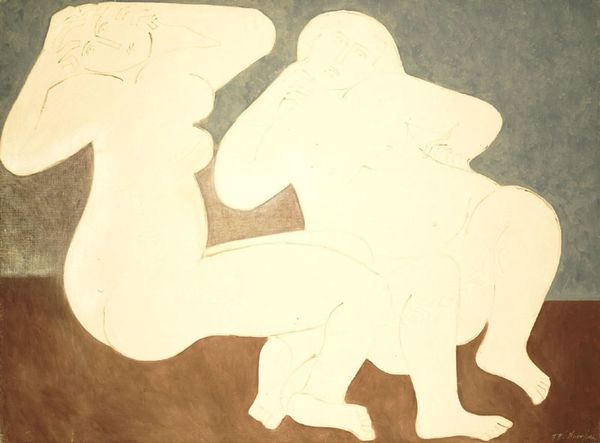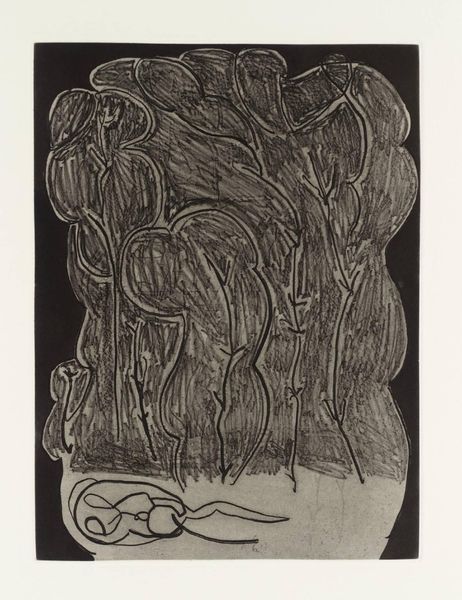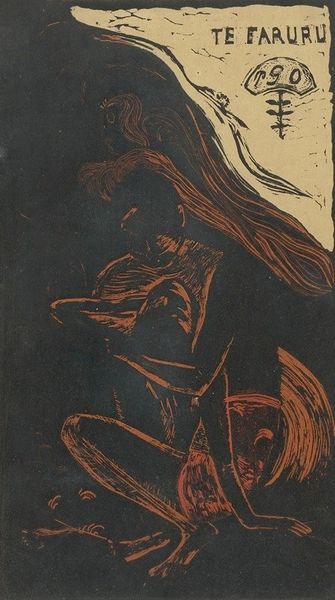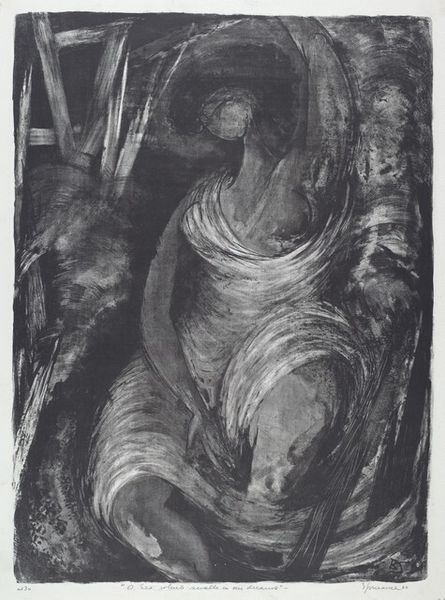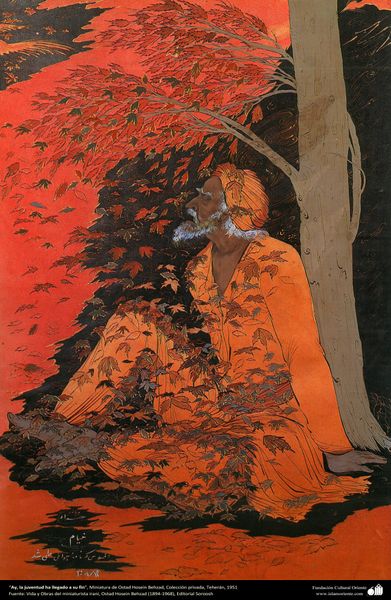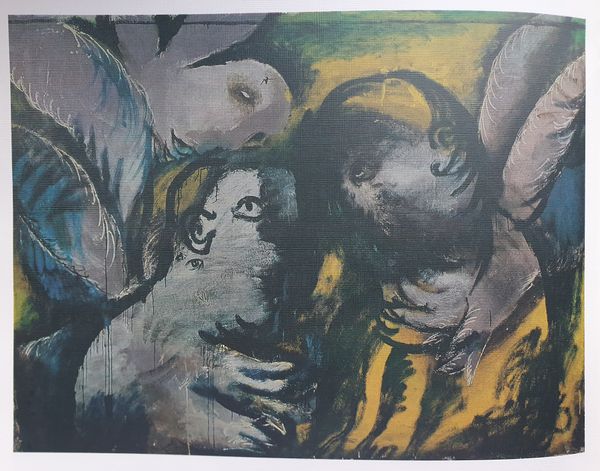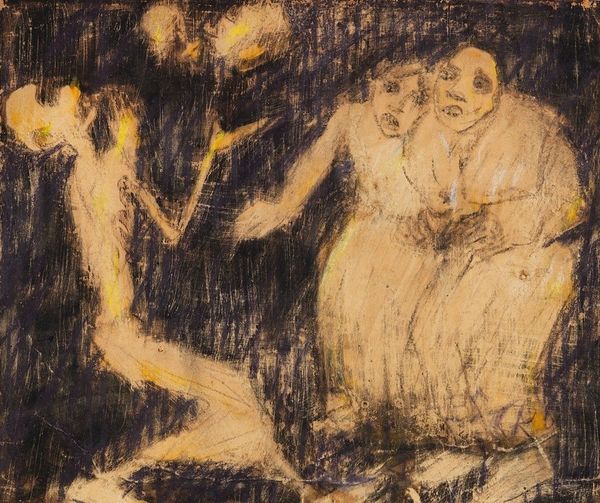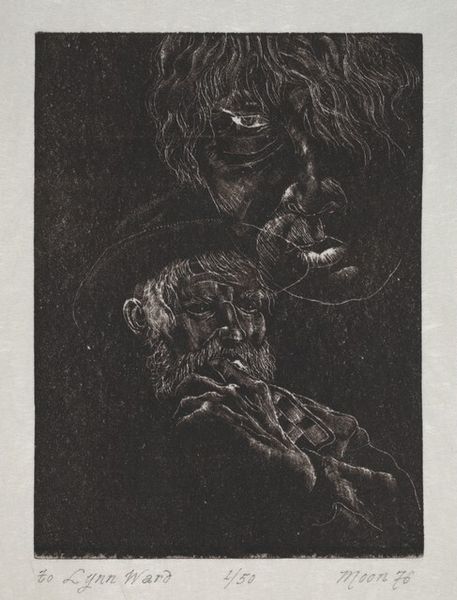
Copyright: Public domain
Editor: This is Vajda Lajos’s "Owl with Nest," a charcoal drawing on paper from 1940. The drawing has a kind of somber and uneasy atmosphere. What do you see in this piece? Curator: Thank you for pointing that out. For me, this work screams of the impending doom of its time. Vajda, a Hungarian Jewish artist working in 1940, created this unsettling image as Europe hurtled toward total war and, of course, the Holocaust. The owl, a symbol of wisdom and foresight, is here rendered as something burdened, even trapped by the "nest," a societal structure unable to protect it. Doesn't the texture itself communicate a kind of suffocating density? What do you make of the composition itself? Editor: That's an insightful way to consider the piece, situating it in its specific historical and social moment. I agree, the composition does add to the feeling of being overwhelmed; the bird and nest nearly fill the entire frame. Could that feeling be linked to how minorities at that time felt increasingly excluded and threatened? Curator: Exactly. The crammed composition, combined with the dark, brooding charcoal, conveys the pressure, the lack of space for marginalized identities during that period. Think about the expressionist style – distorting reality to emphasize emotional impact. This isn't just an owl; it's a premonition, a scream against injustice and inhumanity. Editor: Wow. I came to it looking at it formally, but framing it in the context of cultural and political discourse really shines a light on this charcoal. Curator: I find that bringing these intersections of historical moment and composition to an art piece always makes it even more meaningful.
Comments
No comments
Be the first to comment and join the conversation on the ultimate creative platform.
